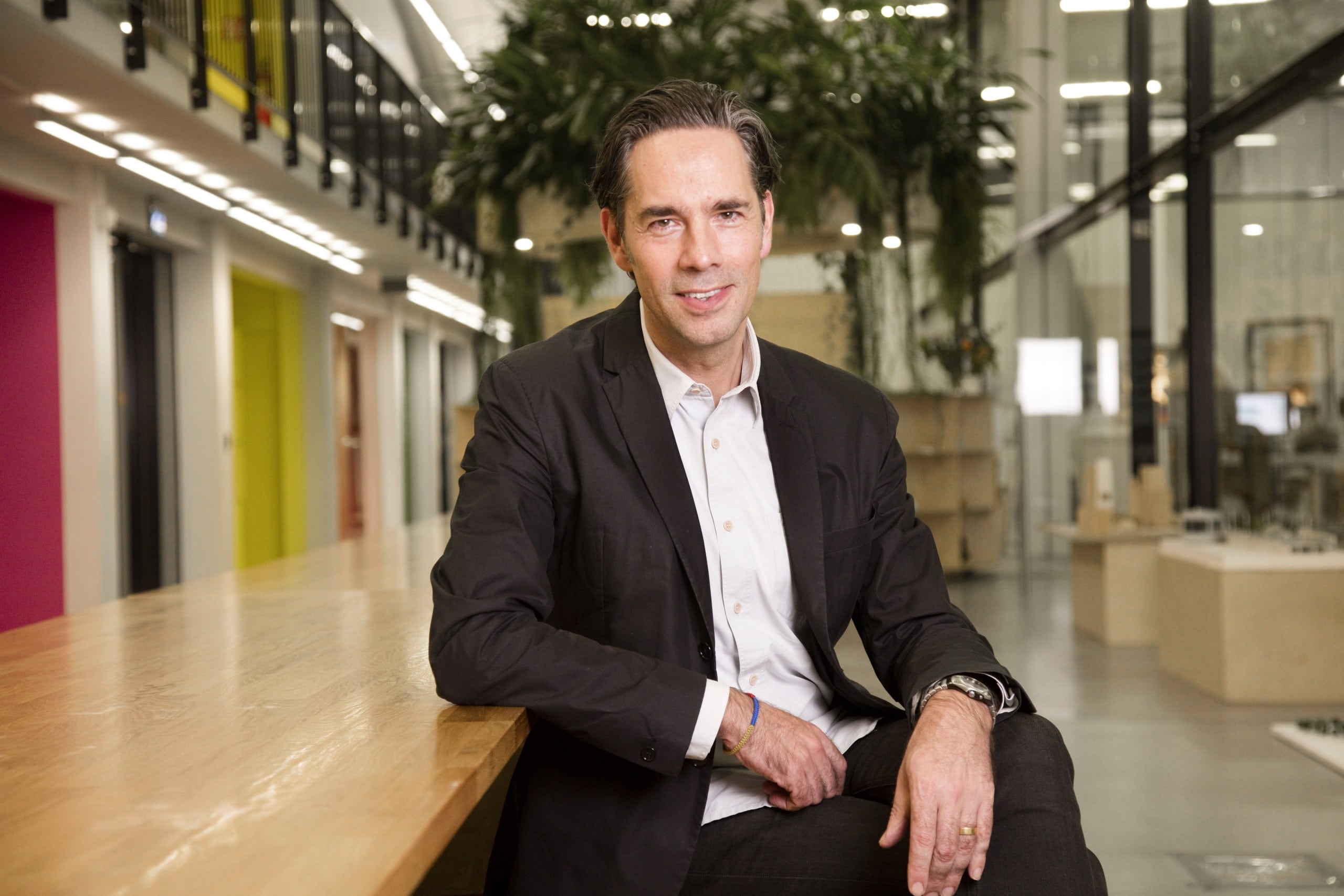Die Schockstarre, in die uns die Corona-Pandemie zu Beginn versetze, ist kreativer Energie gewichen. Weltweit tüftelt man an Innovationen, die den Virus und seine Folgen bekämpfen soll. Ob Gesichtsschutz oder modulare Intensivstationen: Die Architekturwelt versucht ihren Beitrag zu leisten. Wir haben uns mit Jacob van Rijs von MVRDV über die Verantwortung der Profession in Zeiten der Krise unterhalten. Sein Büro arbeitet derzeit an einer Kapazitätsstudie, die untersucht, inwiefern öffentliche Flächen in einer „1,5-Meter-Gesellschaft“ noch genutzt werden können.
Jacob van Rijs: “It is absolutely amazing what kind of energy comes up in times of need”
Baumeister: Your office posted on Instagram last weekend: “These days MVRDVers stay Motivated, Valuable, Reliable, Dedicated and Versatile”. How can we use architectural skills these days to combat the C-virus? How do you use your MVRDV-competence?
Jacob van Rijs: We posted this because we are immensely proud how our team handled the lockdown. It seemed that we could never solve the conferencing tools in the meeting rooms in our office. And suddenly within two days everybody works from home and we have all kinds of tools to meet each other, formally and informally to discuss the projects. It is absolutely amazing what kind of energy comes up in times of need.
The most imminent response in terms of architecture is the new scale, the 1,5-meter-society as it is called in the Netherlands. We made a capacity plan for our office and we will be able to run the operation – after the lockdown – with around 50 per cent capacity. In the office we will keep the teams that use larger machines or that need to communicate more directly.
On a larger scale, our MVRDV Next team, say the scripters in our office, are working on a capacity study for the city to see how much we can still use sidewalks, shops, offices, parks and streets. If we know what the general capacity is of the city, then we also know how many people can go to work in offices. Imagine the capacity would be 50 per cent, like in our office, then we have a clear guideline how the life in the city is changing.
Jacob van Rijs: “We don’t need to be in the offices all the time”
B: In an interview Carlo Ratti quoted Rahm Emanuel, former chief of staff of Obama: “You never want a serious crisis to go to waste”. What chances does the pandemic provide for our future society?
J v R: I can’t hear that quote anymore. I think it is too opportunistic in times that doctors and nurses save lives in our hospitals. If we look into the immediate results of the pandemic on society, we first see death and economic devastation. It’s important to never forget this. What we can learn is efficiency I think, we don’t need to be in the offices all the time. We don’t need that much traffic; we don’t need to travel so much and apparently we can shop much less. All of this will transform the way we use our “build space”. Side effects are environmental improvements. For example in the Netherlands we have a pretty bad air quality and that has improved dramatically during the lockdown.
Maybe it’s utopian but I hope that we finally realize that the gig economy is unsustainable and that some production still needs to happen nearby. Connected to architecture I hope that the crisis is used to accelerate the green deal. So that we indeed use less cars, use more public transport, that we will build with better materials. Now that we see what a difference our lifestyle makes to the environment, it is not a thing we read about in the newspaper anymore. It is here, for all of us to experience.
“Self-isolation has become a social issue”
Being locked up we also see how important a good home can be. Let’s really work on the fundamental right for a good home, as mentioned by the UN: “Everyone has a fundamental human right to housing, which ensures access to a safe, secure, habitable, and affordable home with freedom from forced eviction. It is the government’s obligation to guarantee that everyone can exercise this right to live in security, peace, and dignity.”
Self-isolation has become a social issue, for middle classes with a comfortable home and garden it is much more feasible than for a working-class family in a badly designed and crammed social flat.
Jacob van Rijs: “I sense a certain zoom and webinar fatigue”
B: A pan-european hackathon “#EUvsVirus” organized by the EU commission is coming up in order to develop solutions for coronavirus-related challenges. Via sharearchitects.com MVRDV director Sven Thorissen did a webinar about resilient urbanism few days ago. What responsibility do architects have when it comes to share their knowledge these days?
J v R: Shall we zoom about this? (laughs) I think it’s fantastic that the communication continues and perhaps even better because there is more time to think and reflect. Also interesting, the almost unthinkable happened. But webinars are incredibly successful these days, with visitor numbers by far exceeding the capacity of a physical space. Currently I am also ramping up my online-teaching skills at the TU. We still need to see what this will mean on the design output. But I sense a certain zoom and webinar fatigue as well …
Online kann man sich über die Projekte von MVRDV informieren.
Ein farbenfrohes Übergangs-Zuhause ist auch das neu gebaute MVRDV-Projekt Radio Hotel und Tower im New Yorker Stadtteil Washington Heights.

